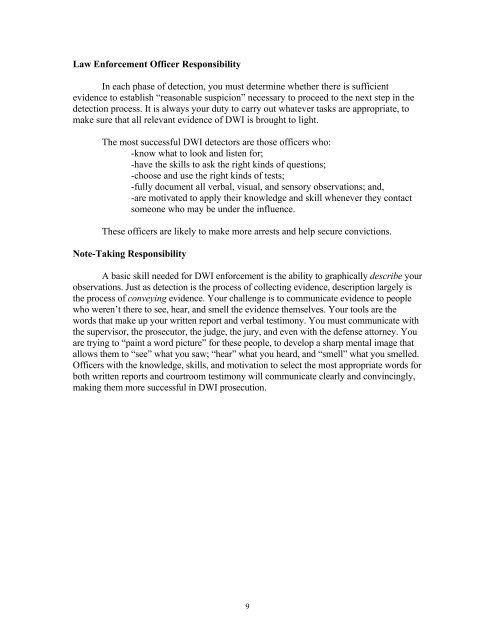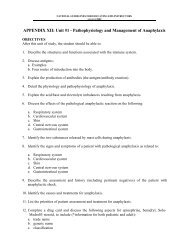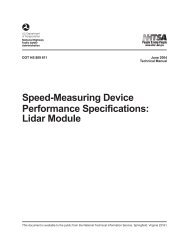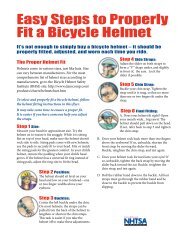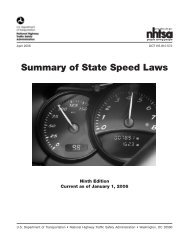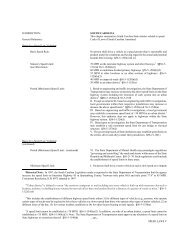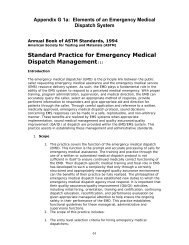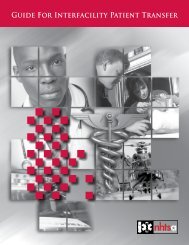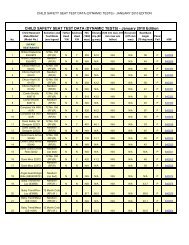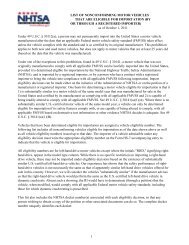The Criminal Justice System: A Guide for Law Enforcement ... - NHTSA
The Criminal Justice System: A Guide for Law Enforcement ... - NHTSA
The Criminal Justice System: A Guide for Law Enforcement ... - NHTSA
Create successful ePaper yourself
Turn your PDF publications into a flip-book with our unique Google optimized e-Paper software.
<strong>Law</strong> En<strong>for</strong>cement Officer Responsibility<br />
In each phase of detection, you must determine whether there is sufficient<br />
evidence to establish “reasonable suspicion” necessary to proceed to the next step in the<br />
detection process. It is always your duty to carry out whatever tasks are appropriate, to<br />
make sure that all relevant evidence of DWI is brought to light.<br />
<strong>The</strong> most successful DWI detectors are those officers who:<br />
-know what to look and listen <strong>for</strong>;<br />
-have the skills to ask the right kinds of questions;<br />
-choose and use the right kinds of tests;<br />
-fully document all verbal, visual, and sensory observations; and,<br />
-are motivated to apply their knowledge and skill whenever they contact<br />
someone who may be under the influence.<br />
<strong>The</strong>se officers are likely to make more arrests and help secure convictions.<br />
Note-Taking Responsibility<br />
A basic skill needed <strong>for</strong> DWI en<strong>for</strong>cement is the ability to graphically describe your<br />
observations. Just as detection is the process of collecting evidence, description largely is<br />
the process of conveying evidence. Your challenge is to communicate evidence to people<br />
who weren’t there to see, hear, and smell the evidence themselves. Your tools are the<br />
words that make up your written report and verbal testimony. You must communicate with<br />
the supervisor, the prosecutor, the judge, the jury, and even with the defense attorney. You<br />
are trying to “paint a word picture” <strong>for</strong> these people, to develop a sharp mental image that<br />
allows them to “see” what you saw; “hear” what you heard, and “smell” what you smelled.<br />
Officers with the knowledge, skills, and motivation to select the most appropriate words <strong>for</strong><br />
both written reports and courtroom testimony will communicate clearly and convincingly,<br />
making them more successful in DWI prosecution.<br />
9


